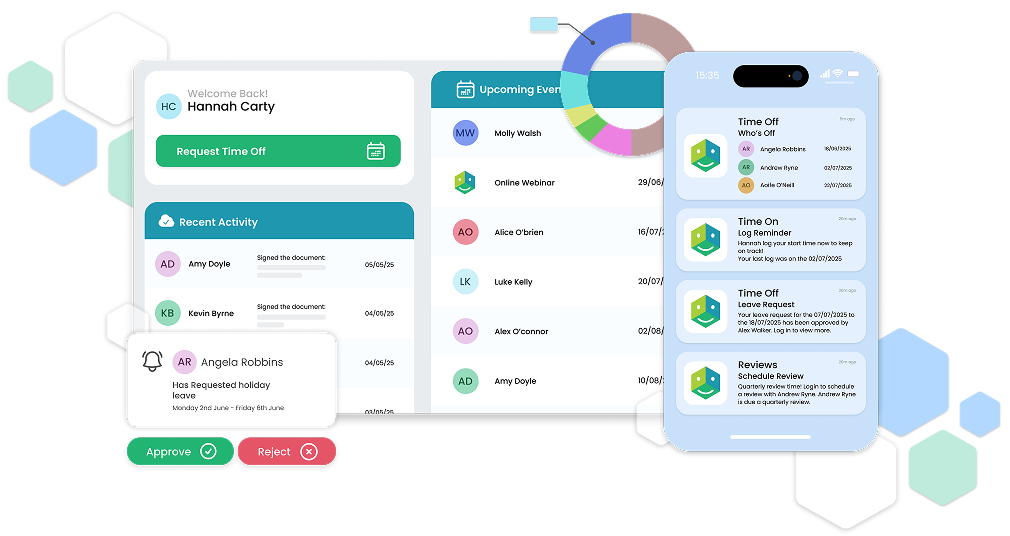Are you sure your employees are fully covered when travelling for work? Are they using their own vehicles? Have you got a system to automate document validation and a regular checklist for managers and employees to work from?
We asked specialist insurance brokers Campion to outline some key points to be aware of if you have employees driving for work.
Along with this advice, you should also have in place:
- A safe driving policy statement
- A completed driving for work risk assessment
- An onboarding workflow for new employees who will drive as part of their job, plus regular driving documentation checks.
HRLocker can help with both new-hire and frequent driver validation processes using our CPD module.

What must employers have in place to ensure anyone driving for work is completely covered while driving for work?
- If driving company vehicles, it’s essential that the driver has the appropriate driving licence. For example, does their licence allow them to drive with a trailer or a particular weight of a vehicle? You need to have a system to check driver category qualifications, expiry dates and validity at the required intervals.
- It’s important to ensure that the driver has the correct age profile to be allowed to drive under that policy. For instance, a driver under 21 – or with less than 12 months of continuous driving experience – could be subject to a higher policy excess. Some policies need 2 years of continuous driving experience for the driver to be covered. Policies have different terms and conditions, so it’s important that these are read carefully.
- Drivers must be given appropriate amounts of rest. Particularly those driving commercial vehicles for extended periods of time, particularly if a tachograph is required to log this time.
- Personal accident cover should also be considered. A fleet policy will not cover the driver for any injuries sustained. The insurer may have an employer’s liability policy, which would deal with this aspect in the event the accident was a result of the negligence of the employer, suchas, if there was a vehicle defect that the driver couldn’t have known about.
- Claims for loss of a vehicle or items stolen from a vehicle will be declined if the keys were not removed from the vehicle. So you need a policy about vehicles being locked, and perhaps, equipment such as laptops being kept in the boot.
- Not having offsite work, working at home or general business travel covered under your company’s Public Liability policy.
- Drivers with undisclosed penalty points that the insurer is not aware of.
- Some employers restrict carrying passengers as this prevents personal injury claims from passengers and reduces the potential for high-value claims.
What about employees driving their own private vehicles on company business – what are they covered (or not covered) for on their privacy policies? What would an employer checklist for ensuring compliance is met consist of?
- Correct vehicle use and/or contingency under the fleet policy.
- Do they have Business use on their own policy? This is typically the responsibility of the employee and most employment contracts will state this in their terms and conditions
- Some private policies cover occasional business use, but the employee should have class 2 cover.
- If the employer requires that the employee do a lot of driving, this will increase the demands on the vehicle and may reduce the time that the insured has to keep the vehicle roadworthy. I.e., they may claim that they didn’t have time to buy tyres due to work commitments and the AD aspect of the claim was declined, so they could potentially make a claim against their employer.

What aspects of driving for work can only the employee be responsible for? Where does employer liability end?
- Depending on the policy being used. I.e. if the insured is driving their own vehicle for business use, then the employee is responsible for all third-party claims and injuries and the employer is not responsible.
- If the employee is driving a work vehicle under a fleet policy the employer is vicariously responsible for all third-party damage and for the damage to the vehicle.
Is Campion operating cross-border with UK-based organisations too? If so, what differences would there be in terms of obligations between UK/NI employers and ROI employers?
- Yes, but the rules in UK/NI are largely the same and differences would only be those between the insurance policies.
What is Campion offering that differentiates them from other operators HRLocker customers might consider or already be using?
- Dedicated claims service
- Partnership
- Dedicated staff who will match the customer to the correct policy to help avoid some of the issues outlined above. An insurer will try to sell you their own product. Campion will match you to the most appropriate products and can discuss the suitability of the product in detail.









